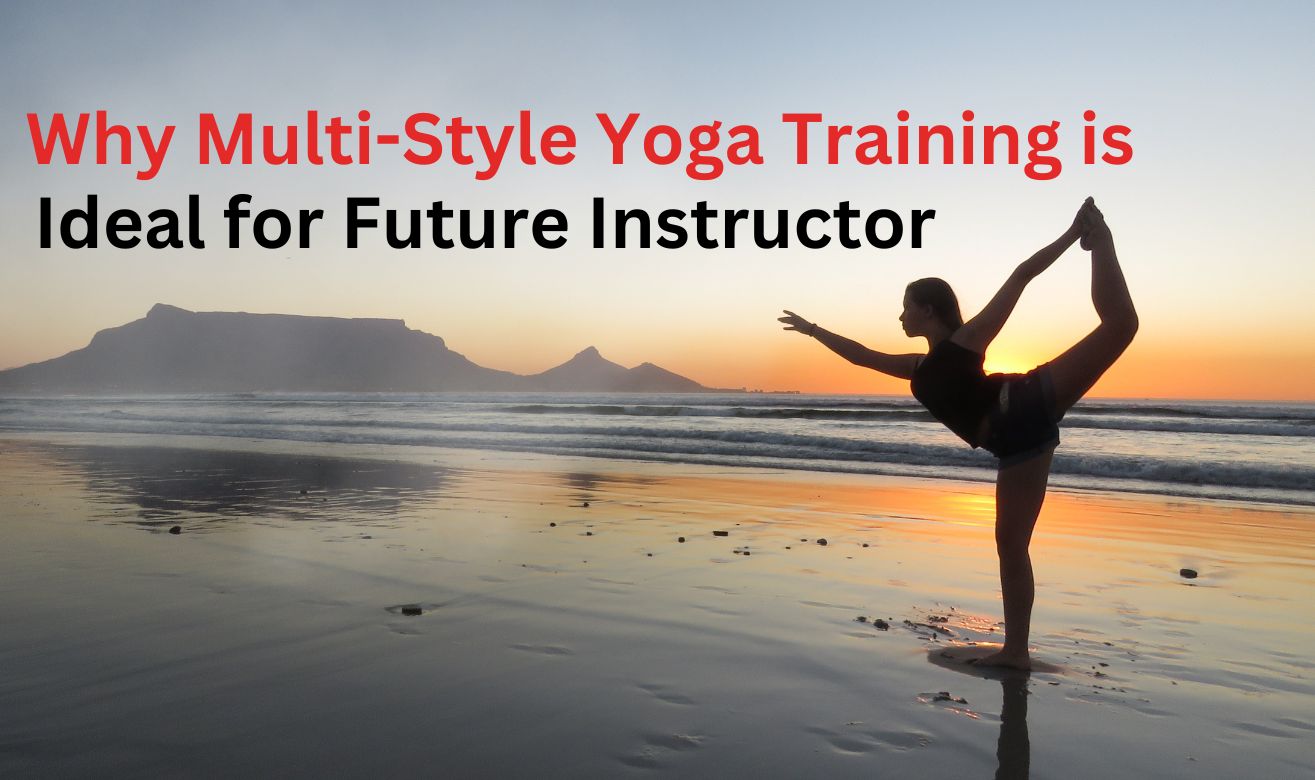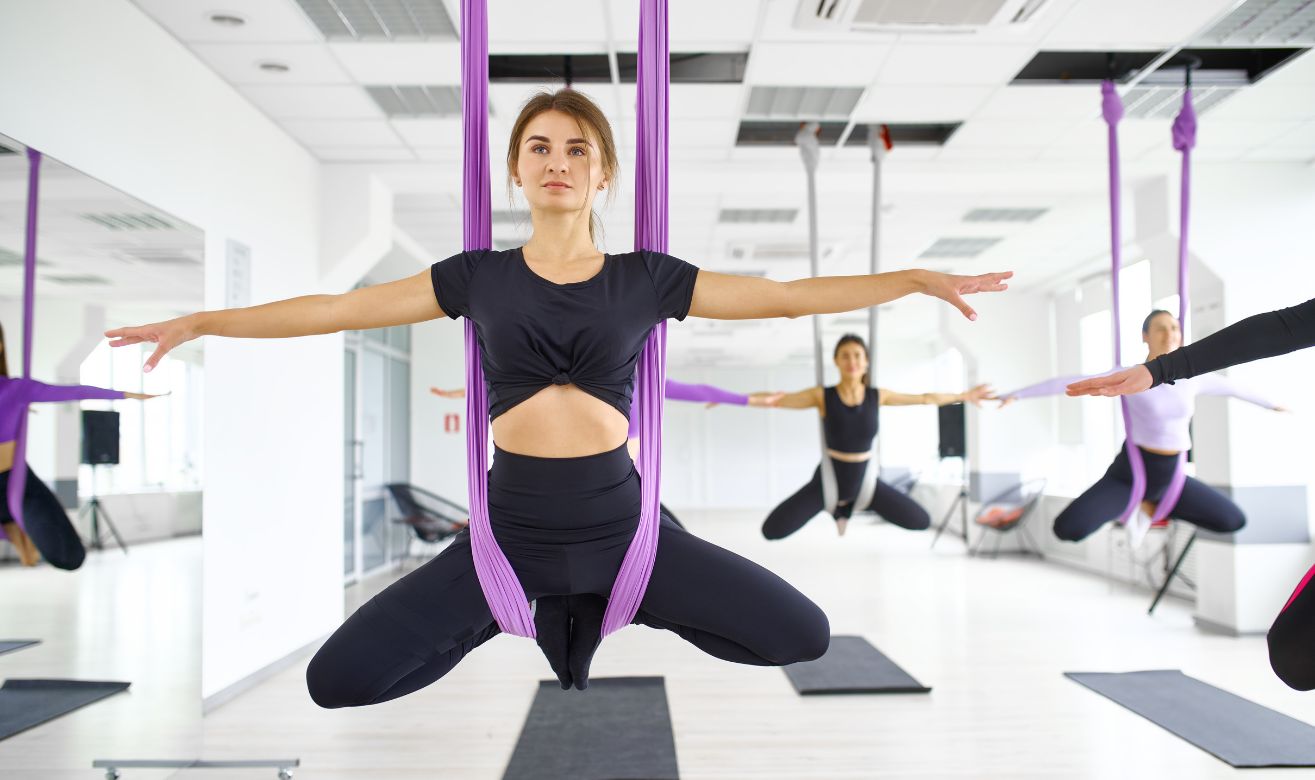Today, yoga is a worldwide trend, with millions hoping to gain balance, flexibility, and mindfulness. Selecting the most appropriate program is significant for those wishing to become yoga teachers.
Unlike traditional yoga teacher training, which caters to one style of teacher, multi-style yoga training provides a more balanced education, making it the most suitable route for future instructors. In this article, we dive into the benefits of multi-style yoga teacher training, why versatility is important, and how it can lead you to better job opportunities.

Overview of Yoga Teacher Training Options
Yoga teacher training programs are varied and can include:
- 100 Hours/200 Hours/300 Hours Yoga Teacher Training: This training focuses on mostly specific to one kind, like Hatha or Vinyasa
- Multi-Style Training: The course encompasses many yoga traditions and gives great variety.
- Specialized Training: Works primarily with individual clients to address health conditions.
Among all the options, multi-style training is the most flexible/the most future-proof for future yoga teachers.
Importance of Versatility in Modern Yoga Teaching.
Many styles of yoga exist today, from gentle restorative yoga to dynamic, physically demanding sequences. Students have wide-ranging needs.
A versatile yoga instructor can reach a wider demographic and broaden the engagement and inclusiveness of their classes.
Training in multiple styles enables instructors to accommodate these different demands, and as a result, they are in high demand in the wellness industry.
What is Multi-Style Yoga Training?
A multi-style yoga teacher training is an extensive training that exposes you to multiple yoga traditions. Rather than being experts in only one form, they learn and practice multiple styles, becoming versatile to serve various students and teaching contexts.
Styles included in multi-style yoga training
Multi-Style Yoga training styles included:
- Hatha Yoga: A foundational practice that is focused on alignment, breath control, and postures.
- Vinyasa Yoga: A flow-based practice that links breath to movement.
- Yin Yoga: A slow, meditative style that aims at deep connective tissues.
- Restorative Yoga: A therapeutic and soothing style that uses props for entire-body relaxation.
- Pranayama: Techniques to hold and release breath. Also, you will learn how to control your breath.
Such a combination of training provides future trainers to teach various styles depending upon what their students are looking for or in need of.
Benefits of Multi-Style Yoga Training for Future Instructors
Following are the benefits of the multi-style yoga training for future instructors.
1. Versatility in Teaching
Multi-style training is multifaceted at the same time. One of the biggest advantages of it is the ability to teach different styles so that the learner can adapt to any sort of environment.
The course is designed to meet student needs. As we know not every style matches every student. Some want very gentle movement (Yin Yoga), and others prefer an energetic flow (Vinyasa).
Expanding career opportunities, instructors trained in multiple styles can teach everywhere from yoga studios and wellness centers to retreats and online platforms.
2. Deeper Understanding of Yoga
Learning multiple styles enhances an instructor’s depth of knowledge.
Multi-style training covers the history, philosophy, and principles of different traditions.
When you start practicing various styles to help instructors, then you’ll realize that different styles complement each other, improving their teaching approach.
3. Better Adaptability to Student Needs
A multi-style instructor can customize classes for different experience levels and preferences.
Beginners, intermediate, and advanced practitioners have different needs, so a multi-style teacher can cater to all.
After completing the MultiStyle Instructors course, a trainee can work in studios, corporate settings, and retreats and even conduct online classes, adapting their teaching accordingly.
4. Increased Job Opportunities Worldwide
The demand for multi-skilled yoga teachers is growing, making it easier to secure jobs globally.
Many wellness centers, yoga studios, and retreats prefer instructors who can teach various styles to accommodate different client needs.
Plus, as the rise of online platforms and technologies increases, multi-style instructors can create personalized programs. It will help you in reaching out to a wider audience.
5. Personal Growth and Mastery
Multi-style training is not just about teaching. It deepens personal practice and boosts confidence.
If you are also willing to be a part of multi-style yoga training, then you have an opportunity to explore different yoga aspects. Where you will learn different breathing exercises like Pranayama, meditation practices, and balancing and making different body alignments.
Other than that, the exposure to multiple styles allows teachers to develop a more holistic approach, which translates into better teaching skills.

How to Choose the Right Multi-Style Yoga Training Program
Choosing the right program is crucial for a good career in yoga teaching. Consider these factors:
1. Curriculum
- Yoga philosophy and history
- The practice of asana in various styles
- Breathing techniques (Pranayama) and meditation
- Anatomy and physiology
- Cohort structure and teaching methodology
- Certification & Accreditation
2. Yoga Alliance Accreditation
Ensure that the program you are considering is registered with Yoga Alliance or registered under Yoga Alliance or a proper certifying body. It increases credibility and employability.
3. Internationally Recognized Certification
A good yoga school will provide you with a globally recognized certification that will allow you to work in studios around the world.
4. Check Whether the Instructors Must Have Relevant Experience
Be careful before you enroll in multi-style yoga training. Ensure that the instructor assigned to you must have relevant experience in the related domain.
Seek out schools run by qualified teachers with tons of experience in a variety of yoga styles.
5. Location
Many of you have considered how location can play an important role in choosing the right multi-style yoga training program.
But yes, it does play a crucial role in selecting the right multi-style yoga training course.
Sometimes, you try to join the ashram, but because of its distance, you may feel like dropping the class.
6. Training Format
It is good to be aware of the training methodologies because it can assist you in finding whether the multi-style training is good for you. Evaluate an in-person program versus an online program that works with your lifestyle and your learning style.
Conclusion
The Best Path For Future Yoga Instructors is Multi-Style Yoga Training. It broadens teachers to meet all types of students’ needs, teach in multiple settings, and develop both their professional and personal lives.
A multi-style training program that is well-designed will help budding instructors face a flourishing career in yoga teaching.
A yoga teacher with multi-style training is equipped for the rapidly changing yoga industry, whether you want to teach in studios, retreats, or online.
